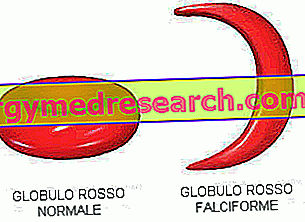
Many processed foods, ie those processed on an industrial level (pre-cooked, kneaded, etc.) contain palm oil or other ingredients derived from them.
Red Oil of Palma
Since the mid-1990s, cold pressing has also begun for palm oil, which in this unprocessed form is red. It is used as a cooking oil in cooking, raw and above all mixed with mayonnaise for salad dressing.
The red pigments of crude palm oil are antioxidants belonging to the family of carotenoids (pro vit. A) and of tocotrienols (or tocopherols, or vit. E). These are very useful vitamins for the body that are often added to foods, food supplements and cosmetics due to their supposed beneficial effects on health.
Refining of Palm Oil
After squeezing the mesocarp of the fruit, some palm oil derivatives undergo refining processes.
The first is fractionation, which involves crystallization and the consequent separation of solids (a component called stearin, usually used by the detergent industry) and liquids (a component called olein, generally used by the food industry).
Follow the fusion and the degumming, to remove impurities.
Then, the palm oil is filtered and bleached .
Physical refining is able to eliminate odors and pigmentation, in order to obtain a refined, bleached and deodorized palm oil (refined, bleached and deodorized palm oil - RBDPO); also the remaining free fatty acids, as well as the stearin, are exploited in the production of detergents or other non-food products.
RBDPO is considered the basic derivative of palm oil, which is the most sold on the world market.
Several companies further fractionate palm oil to obtain palm olein, a liquid oil used for cooking or processing other food products; it is more valuable than that containing stearin, since it boasts a higher percentage of oleic acid.
Palm oil as butter and substitute of hydrogenated fats
The saturated component of palm oil tends to make it solid even at room temperature (in temperate regions). It therefore has the same chemical and physical characteristics as butter and hydrogenated fats but with the advantage of being much cheaper; for this reason, palm oil is often used in industrial formulations such as, for example, baked goods and creams.
The recent increase in the use of palm oil in the food sector is partly due to the equally current labeling obligations, which require to declare the content of trans fatty acids in packaged food (notoriously unwanted due to their negative health effects). ).
For some years, palm oil has been considered a valid substitute for hydrogenated fats also from a nutritional point of view, as it is trans fats free from fat. On the other hand, a study conducted in 2009 revealed that palm oil may not be a good food substitute; this statement has a universally applicable and even more significant value for people with high levels of LDL cholesterol.
Palm oil: Biomass and Bioenergy
Palm oil can be used to obtain biodiesel, also known as palm oil methyl ester, pure or mixed with other fuels.
This biodiesel is created through a process called trans esterification.
Palm oil biodiesel is a product compliant with European standard EN 14214 for biodiesel.
The largest plant in the world for the production of palm oil biodiesel is the Finnish plant "Neste Oil", located in Singapore, which opened in 2011.
Organic waste from palm oil processing, such as shells and wood components, if transformed into pellets, can be used to produce heat energy.
Furthermore, palm oil used for frying foods (no longer edible) can be converted into methyl ester thanks to a chemical treatment to create biodiesel.
Palm Oil for Wound Care
Palm oil is used, in the popular sphere, as an antimicrobial for topical use for wounds. However, scientific research does not confirm this kind of therapeutic efficacy.



